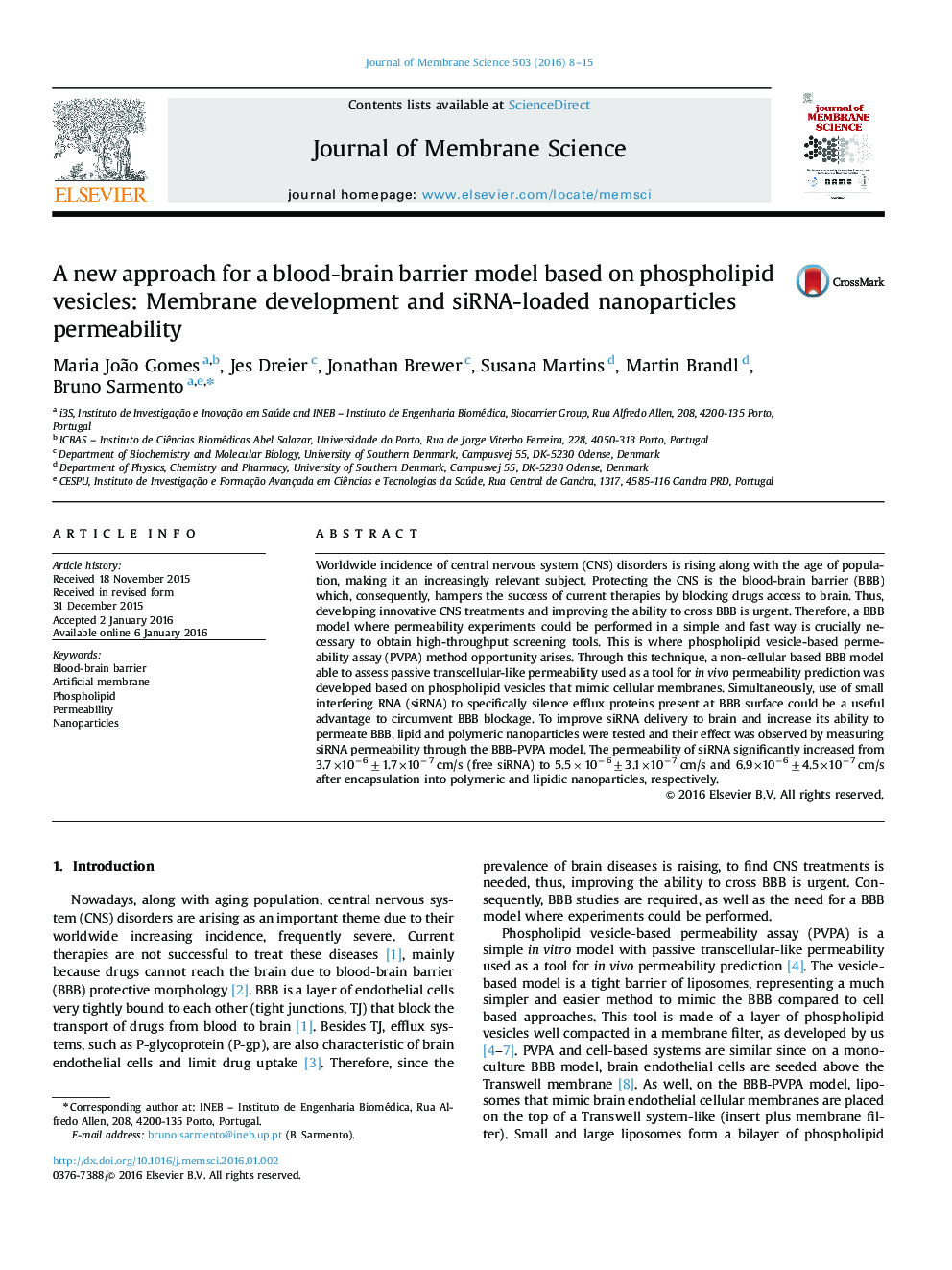| Article ID | Journal | Published Year | Pages | File Type |
|---|---|---|---|---|
| 632561 | Journal of Membrane Science | 2016 | 8 Pages |
Abstract
Worldwide incidence of central nervous system (CNS) disorders is rising along with the age of population, making it an increasingly relevant subject. Protecting the CNS is the blood-brain barrier (BBB) which, consequently, hampers the success of current therapies by blocking drugs access to brain. Thus, developing innovative CNS treatments and improving the ability to cross BBB is urgent. Therefore, a BBB model where permeability experiments could be performed in a simple and fast way is crucially necessary to obtain high-throughput screening tools. This is where phospholipid vesicle-based permeability assay (PVPA) method opportunity arises. Through this technique, a non-cellular based BBB model able to assess passive transcellular-like permeability used as a tool for in vivo permeability prediction was developed based on phospholipid vesicles that mimic cellular membranes. Simultaneously, use of small interfering RNA (siRNA) to specifically silence efflux proteins present at BBB surface could be a useful advantage to circumvent BBB blockage. To improve siRNA delivery to brain and increase its ability to permeate BBB, lipid and polymeric nanoparticles were tested and their effect was observed by measuring siRNA permeability through the BBB-PVPA model. The permeability of siRNA significantly increased from 3.7Ã10â6±1.7Ã10â7 cm/s (free siRNA) to 5.5Ã10â6±3.1Ã10â7 cm/s and 6.9Ã10â6±4.5Ã10â7 cm/s after encapsulation into polymeric and lipidic nanoparticles, respectively.
Related Topics
Physical Sciences and Engineering
Chemical Engineering
Filtration and Separation
Authors
Maria João Gomes, Jes Dreier, Jonathan Brewer, Susana Martins, Martin Brandl, Bruno Sarmento,
